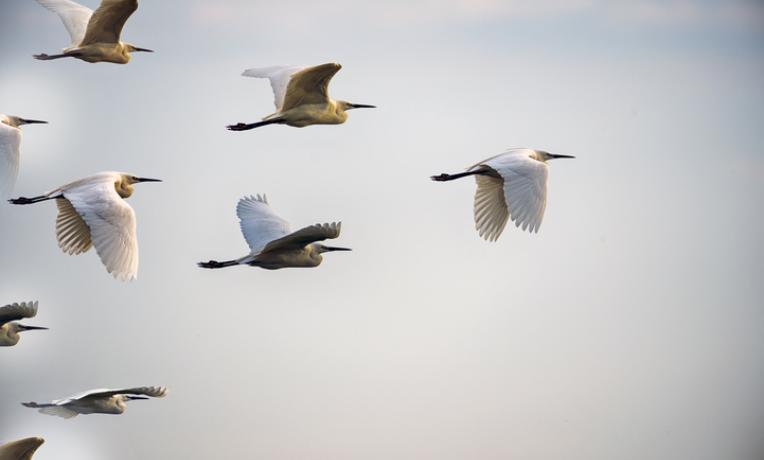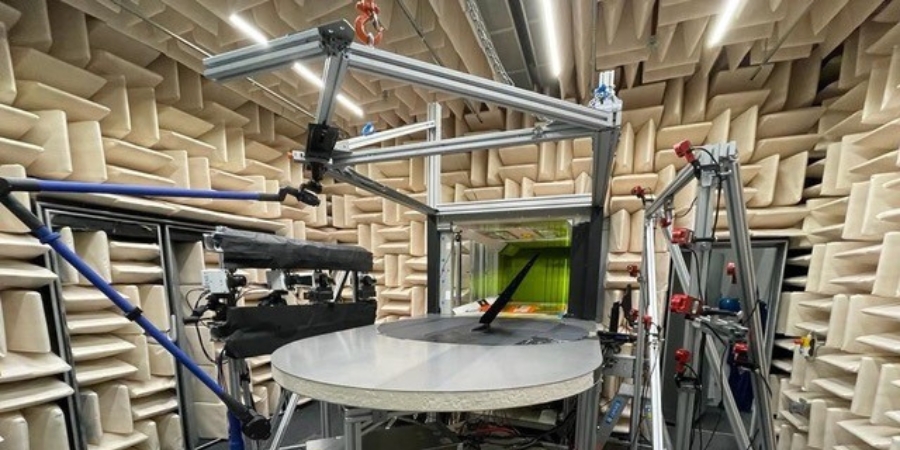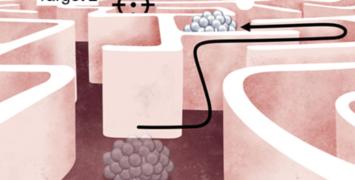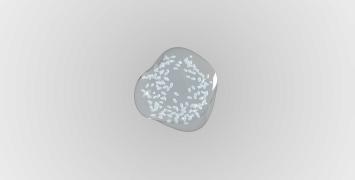The flight of the robotic bird

By Inge Ruigrok
The fascination with bird flight has enchanted humanity for centuries, with Leonardo da Vinci's visionary pursuits transcending art to delve into scientific inquiry and engineering, aiming to replicate the elegant flight of birds. Yet, even after six centuries, imitating and understanding avian wing movements – their flapping flight – remain formidable challenges.
Stefano Stramigioli's journey into this domain began unexpectedly through collaboration with the MythBusters, a popular science entertainment show on the Discovery Channel. 'We were developing a flapping mechanism that Jamie Hyneman, one of the stars, would be flying. This led me to connect with a researcher specialising in robotic bird technology. Although the MythBusters eventually found the project too complicated, our collaboration persisted.'
LEGO blocks
Stramigioli is an expert in Port-Hamiltonian system theory, employing this mathematical framework to model and analyse complex multi-physics systems. 'A notable feature gaining prominence is its ability to describe open systems,' he explains. 'Traditionally, engineering systems are approached holistically in modeling. However, Port-Hamiltonian system theory introduces a modular approach. Individual components can be modeled as open systems with connecting ports, forming a library of components similar to assembling Lego blocks.'
'This modular methodology struck me as a fantastic tool for studying robotic bird dynamics,' Stramigioli continues. 'Such an approach, especially in the complex field of fluid dynamics governed by the Navier-Stokes equations, had not been previously explored. Typically, these equations are not studied with open boundaries like the open systems I described.'
The existing work on robotic birds relied heavily on trial and error, lacking a comprehensive understanding of the underlying physics. For example, there was no existing theory to study the interaction of fluids with deformable objects like airplane wings.
Stramigioli: 'I thought it would be exciting to describe the fluid surrounding a wing, treating the wing's deformation as another modular component, and then connecting the fluid dynamics to the wing's elasticity. This would allow for the modeling of two of the most complicated classical phenomena in physics in a structured and modular way. The ambition was to achieve a level of modeling complexity previously considered impossible.'
Unexpected findings
'At first, I thought, 'This is very ambitious,' but it inspired me to write the ERC proposal. I had to pinch myself when I got the grant because I was so happy. I assembled an exceptional team and instructed them, 'Hold off on publishing; let's focus on studying for a year.'
This approach paid off. We found a way to discretise the mathematical descriptions, or particularly the Partial Differential Equations, into numerical calculations and engineering simulations. Our unique discretisation methodology has the potential to revolutionise many aspects of engineering.
Interestingly, something unexpected happened: the numerical simulations taught us how to understand the physics. Normally, you understand the physics first and then use numerical methods to write computer codes and run simulations. However, by analysing the numerical results, we discovered certain mathematical structures that provided insights into the physics. This reverse process was quite positive and completely unexpected.
We also had three team members dedicated to experimental tasks, such as conducting experiments in the wind tunnel. They designed a complex device to flap the wings quickly and orient them at desired speeds. Through a series of measurements using particle seeding to capture unsteady flow and simultaneously measuring the elastic deformation of the wings, we obtained data that had never been collected before. We are still processing this data, which is likely to lead to a major publication.'

Quality time
During the project, Stramigioli began collaborating with theoretical physicists Frederic Schuller. 'Despite the remarkable advancements in physics over the past century, bridging the gap between quantum mechanics and general relativity has remained a challenge.
Frederic, renowned for his engaging lectures, was impressed by my Port-Hamiltonian system perspective. These ideas can be extended to quantum mechanics, and we are very enthusiastic. He moved to Twente, and we work together every Thursday, writing equations and developing our theories. We are now close to making a major contribution to quantum mechanics, far beyond what I had initially envisioned.
The ERC has truly changed my life. The beauty of this program is that it allowed me to focus on my research and have quality time for science. I was very active at the European level for projects, serving as vice president of different organisations. While my work was valued there, the ERC made me realised that science is my true passion. It has fuelled my enthusiasm and changed the way I work, interact, and envision my future.'
Complex systems
Beyond science, Stramigioli believes that his work will have significant societal impact. 'I prefer to see the robotic bird not as an object but as a project', he says. 'This project, centred around the bird, provided insights into modeling complex physical systems involving fluids, elasticity, and other multi-physics phenomena. Society benefits from scientific progress, and understanding the physics of things is an important part of that.
For example, windmills are an integral part of our energy transition. This modeling approach may bring new insights and tools to improve windmill design. Furthermore, in healthcare, developing high-tech stents for cardiovascular disease requires modeling the interaction between fluids and vessels. Tools that can model physics precisely, easily, and scalably will significantly impact healthcare and other fields.'
The robotic bird became a means for Stramigioli to study these processes. 'The idea of the ERC project was to understand the bird and improve it. As it turned out, we didn’t advance as much in creating a new bird as we thought. Instead, we gained a lot of insights into the underlying processes and improved the tools.
Personally, I think this is a better outcome than simply creating a better flying bird. If we had succeeded in that, it would have made users happy but wouldn't have been a fundamental contribution to science. Instead, we achieved the opposite. I am always dreaming and optimistic, and I believe this has the potential to address major problems. Frederic and I believe that in 5 to 10 years, physics will be taught differently because of these insights.'
Biography
Stefano Stramigioli received his M.Sc. with honors (cum laude) in 1992 and his Ph.D. with honors (cum laude) in 1998. He is currently a full professor in Advanced Robotics at University of Twente in the Netherlands. He is part of the Robotics and Mechatronics (RAM) group within the Faculty of Electrical Engineering, Mathematics, and Computer Science (EEMCS). He is an IEEE Fellow, an ERC Advanced Grant and ERC PoC laureate, and a member of the Royal Holland Society of Sciences and Humanities (KHMW). He leads a growing group of about 60 people. For thirty years, he has been teaching Modeling, Control, and Robotics to undergraduate and postgraduate students. He has published hundreds of peer-reviewed publications and four books.





